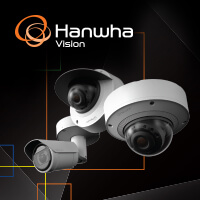Leveraging Technology for More Proactive Security
Due to economic pressures and pivots in business strategies following the COVID-19 pandemic, many organizations have laid off workers. Sometimes, these difficult moments are handled in a professional manner. But other times, former employees can become disgruntled—lashing out at their former colleagues and causing harm.
Most organizations have created policies and procedures to handle workplace violence threats as they are detected. But what if there was a way to be more proactive? To leverage technology to prevent harm from happening in the first place?
This is the scenario that Donald Cornett, director, global product management, ecosystem solutions at Motorola Solutions; Drew Weston, CPP, director of national accounts at Mobile Communications America; and Sharon Hong, vice president, ecosystem solutions at Motorola Solutions, explored in the Monday presentation “From Reactive to Proactive: How AI and Automation Can Speed Response Time in Critical Incidents” at GSX 2023.
SponsoredSecurity and Surveillance Solutions Like No OtherAt GSX 2023, Hanwha Vision is showcasing an array of new products and solutions in Booth #3123 in Artificial Intelligence (AI) Hanwha stands at the forefront of AI innovation and will demonstrate new uses of AI in PTZ and Q series cameras, delivering precise detection, robust search capabilities, elevated data analysis, and enhanced image quality. Also on display will be FLEX AI technology machine learning which helps our cameras continually learn to recognize key objects for more efficient operation. |
Main Takeaway
Humans are very good at making decisions to react to a situation they’ve never experienced before. But what they’re not great at is monitoring multiple events or systems at the same time—aka, multitasking—Hong explains.
Contrary to popular belief, the human brain is equipped to only handle two tasks at the same time by quickly switching back and forth between both tasks. When humans actually attempt to multitask, they often experience a 40 percent reduction in productivity, Hong says.
This poses a challenge for security teams, who are often being tasked with doing more with fewer team members. For example, consider reviewing video surveillance footage. The average security incident spans four to six hours. If you have eight cameras capturing that incident, that’s potentially 32 to 48 hours that a human will require to review that video—an entire workweek, Cornett says.
But, all is not lost. We’re currently living in an age where technology can help humans do more tasks, more quickly, and more efficiently. Security technologies now exist that are designed to monitor an environment, detect anomalies, and alert humans, who can then decide how to respond to the situation.
Hong provided one example of how to leverage technology to take a more proactive approach to security to a disgruntled former employee that we'll call Bob.
Bob does not take the news of his layoff well in his conversation with his supervisor. So, after being escorted from the building, the security team could flag Bob in its systems. They would revoke Bob's credentials and access to all systems. They would add Bob's vehicle and license plate number to their license plate recognition and vehicle detection system to alert the team if he drives by or attempts to park in the area.
Security could also take the step of including his image in its video management system to detect his presence, if seen on camera, outside the building. That detection would then initiate an alert to the access control system, to lock the main door to prevent Bob from entering the facility. It would also alert the security team, who could then be dispatched to meet Bob at the door and escort him off the property.
Key to making these systems work in this fashion, however, is creating strong rules and policies that the technology's workflow automation tool uses to alert security to an incident, Hong explains.
Leveraging technology in this way can help “automate some of those things that a person would normally make a decision around—or that you don’t want someone taking the time to make those decisions,” Hong says. “You want to save the time and focus for people to make decisions that are really important.”
Next Steps
With these technology tools in place, security practitioners are looking at how they can be leveraged to detect and analyze human behavior, Weston says.
For instance, having a video surveillance system and analytics that are capable of detecting a disgruntled or agitated person. That activity would be flagged and potentially initiate a security officer response to deter an act of violence or disruption before it occurs.
Future iterations of video analytics could also be more powerful in their ability to identify specific year, make, and models of vehicles, Cornett says. Or even a specific man in a blue suit on a convention center exhibit hall floor.
Additionally, with a broader technology infrastructure, organizations are looking at how the can use that technology to identify the individual who is best posed to respond to an incident. At a large manufacturer that Weston worked with, he says they used the existing security sensor systems combined with GPS and Geographic Information System (GIS) data to identify where people are on the 400-acre property.
If the sensors detect something unusual that requires a response, that alert can then be pushed to the security officer that is nearest where the detected activity is—instead of a security officer across the campus who might take several more minutes to respond.
“What we’re trying to accomplish here is moving from right of bang to as close to bang as possible—to even maybe left of bang,” Weston says.
ASIS Resources
Weston, Cornett, and Hong’s session was sponsored by two ASIS International subject matter communities. Visit the Emerging Technology Community and Information Technology Security Community on Connects (via the respective links) to get involved in their work.
Want to learn more about AI and machine-learning enabled technologies? Check out these resources from Security Management and ASIS International:
- “Security Deep Dive: Understanding the AI Revolution”
- “Major Tech Companies Commit to Voluntarily Regulate Development of Artificial Intelligence”
- "From Reactive to Effective: 5 Ways to Refocus School Security Investment Decisions"
- Artificial Intelligence in Security: Opportunities and Implications
- “The AI Advantage: Leverage AI as a Security Risk Manager”
- “Better Data Can Make You a Better Leader: How AI can Transform Physical Security”
Megan Gates is the editor-in-chief of Security Technology and the GSX Daily, which are published by Security Management. Connect with her at [email protected] or on LinkedIn. Follow her on Twitter and Threads: @mgngates.












